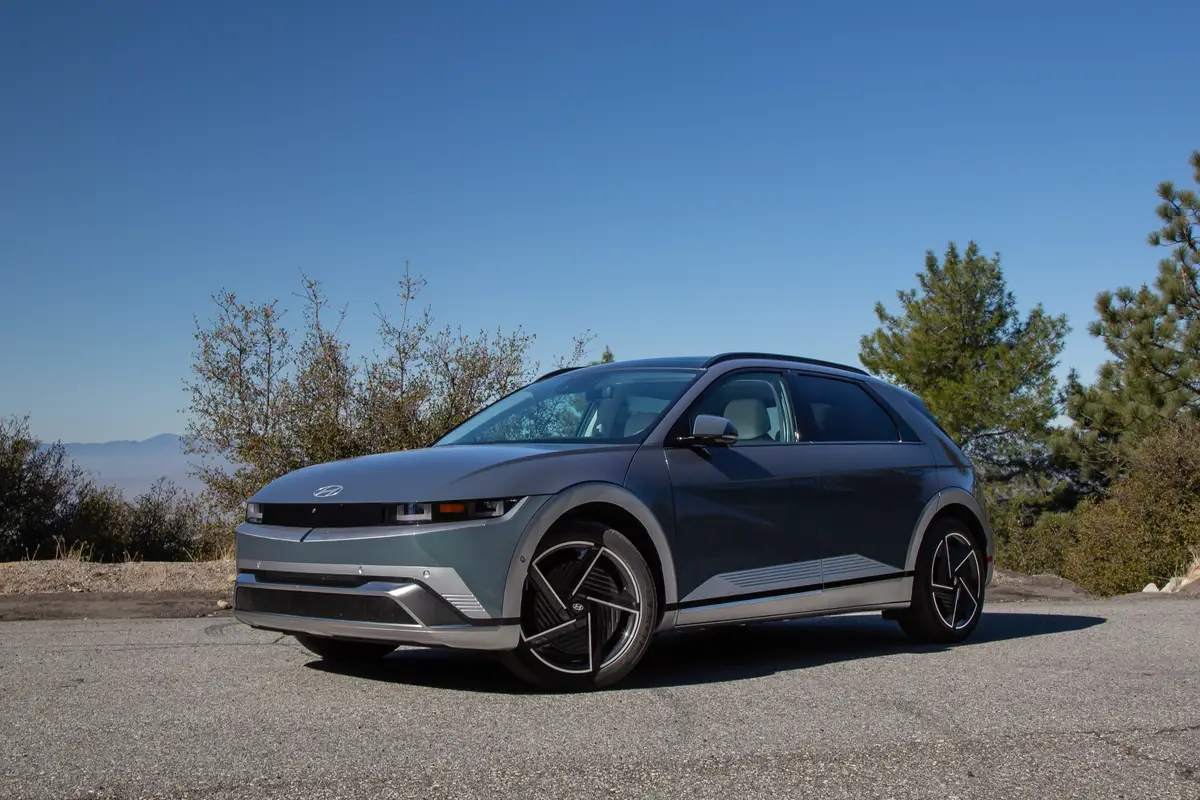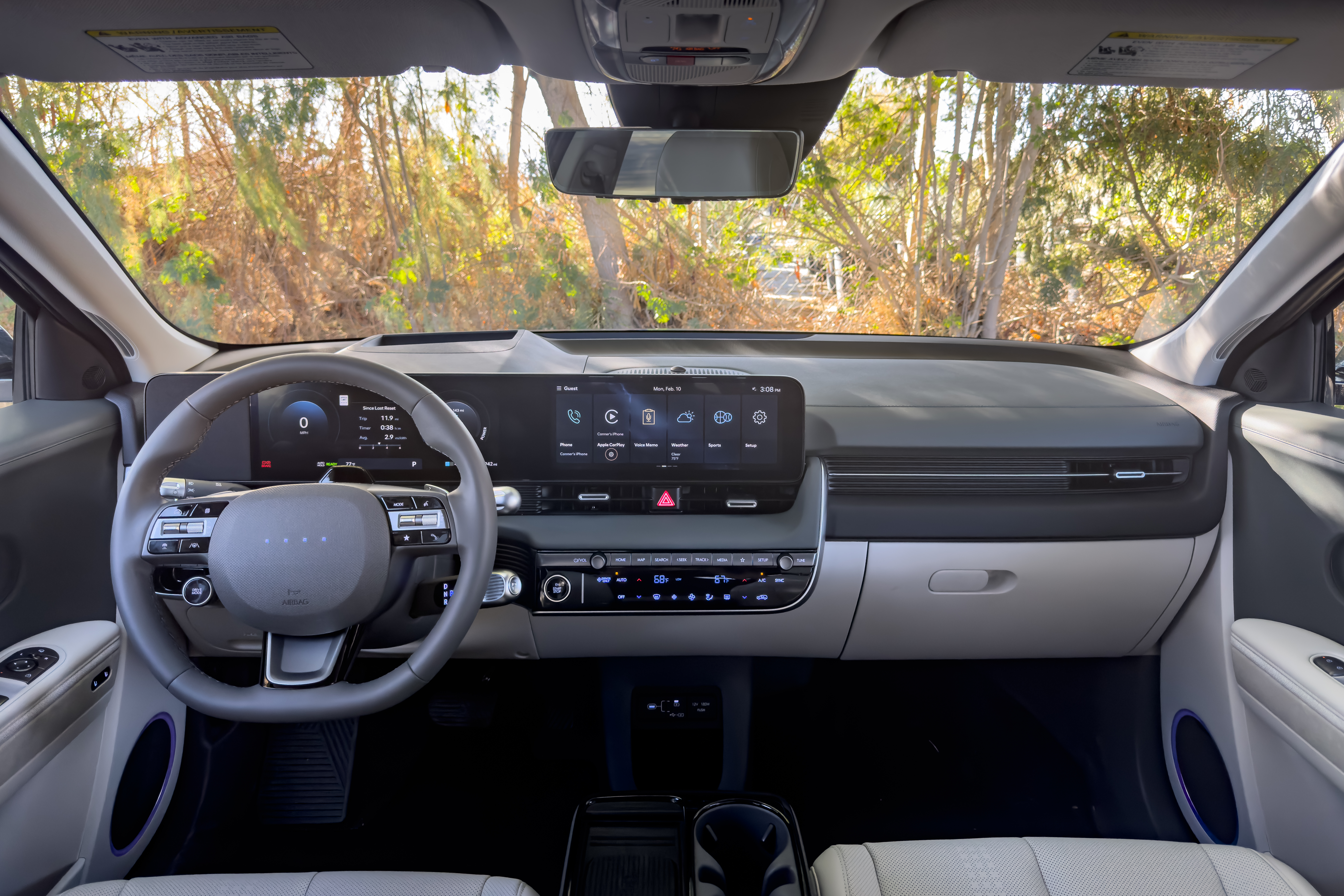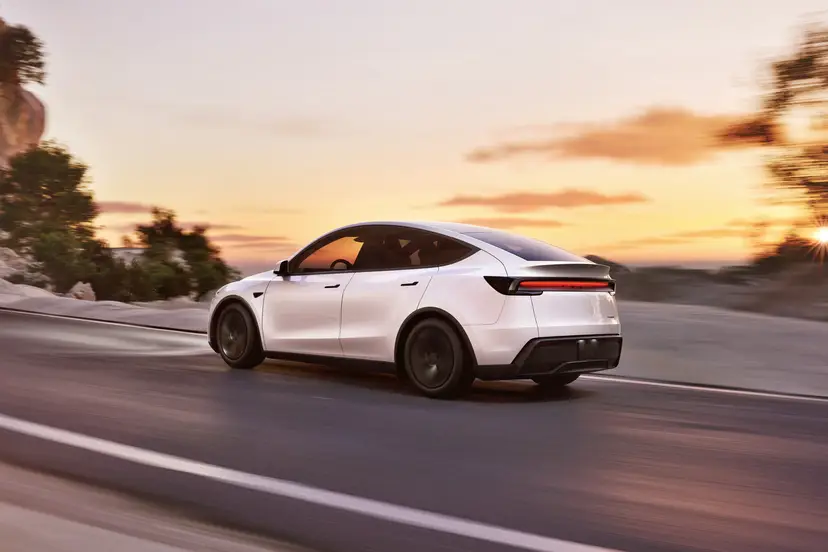
The verdict: Subtle as they may be, updates to the Hyundai Ioniq 5’s charging, batteries and interior packaging for the 2025 model year cements it as one of the most compelling all-electric SUVs on the market.
Versus the competition: The 2025 Hyundai Ioniq 5 mostly sits near the top of the mid-size EV heap from a range, driving experience and equipment perspective, butting heads with the Tesla Model Y, Ford Mustang Mach-E and Volkswagen ID.4.
Now this is a satisfying refresh. Tweaked and twiddled for the new model year, the fresh-squeezed 2025 Hyundai Ioniq 5 adds everything you’ll like and nothing you won’t. Straight to the chase, eh? Well, there’s no point muckin’ about — I’ll leave that to the new off-roadish XRT trim level.
Related: 2025 Hyundai Ioniq 5 Moves to Georgia, Gets Face-Lift, Gains XRT Trim
It’s clear Hyundai listened to the swell of the crowd on this one. First and foremost, we’ve got a standard rear wiper, folks. As obvious as it seems, this was not an available, let alone standard, feature for any previous model years. This inexplicable oversight is rectified, as are a few stylistic and aerodynamic warts that apparently bothered Hyundai. The front end is massaged ever so slightly, we’ve got a new rear roof spoiler and a new aero-blade-style wheel design, all subtle stuff I’m happy to see has left the 5’s retro-cyberpunky aesthetic intact.
Related Video:
We cannot generate a video preview.
What’s New Inside?
The interior gets the biggest switch-up. The center console is reorganized, with new placement of the wireless charging pad and a glorious row of physical buttons for frequently accessed comfort features including the heated and ventilated seats, heated steering wheel and parking cameras. Crucially, that lovely empty space ahead of the console that extends under the dash remains, offering one of the rare chances the modern consumer has to experience the fabulous, airy bench-seat cabins of yore.
The tech is better, too. The set of screens for the instrument panel and infotainment system are still 12.3 inches, but the infotainment system is new and now has standard wireless Apple CarPlay and Android Auto. The climate controls are revised, the steering-wheel design is updated, and you can keep your compatriots cozy in the SEL and above trims with optional heated rear seats.
All excellent quality-of-life improvements of a rare caliber that should make those who upgrade quite happy. Another is the 2025 Ioniq 5’s North American Charging System port, the first new car outside of a Tesla to offer it as standard. This means that, yes, you can plug your new 2025 Ioniq 5 into Tesla’s sprawling charge network without messing with clunky adapters.
However, if it’s absolute speed you seek, you might want to stick to the quickest Combined Charging System DC fast chargers, which the Ioniq 5 will still be able to use with an adapter. The new Ioniq 5’s quickest charge times are achieved via juicy CCS chargers, which can take the electric vehicle’s battery from 10%-80% in about 20 minutes at a peak vehicle charging rate of 257 kilowatts. NACS rates peak at 126 kW, but Hyundai is working on pushing that to 135 kW in the near future with an over-the-air update.
Battery Bumps
Your battery choices are revised as part of this charging overhaul, with 5 kilowatt-hours extra over its predecessor on the Standard Range pack for a total of 63 kWh and 6.6 kWh more for the Long Range pack, which is now rated at 84 kWh. Apply this to the different motor configurations, and the result is either minor or quite major: Range improvements depend on the trim level and motors, but the 2025 Ioniq 5 sees a minimum increase of 9 miles of range and a maximum of 30 miles, with the long-range rear-wheel-drive version rated to go 318 miles, according to the EPA. The standard-range RWD config has 245 miles of range, while dual-motor all-wheel-drive SE and SELs will cover 290 miles. The AWD Limited can cover a still solid 269 miles, while the new XRT trim is the dual-motor outlier with 259 miles of range, lesser no doubt due to its standard all-terrain tires.
Power is unchanged, so that means the basest-of-base single-motor standard-range model still poots around with 168 horsepower and 258 pounds-feet of torque, jumping to a more manageable 225 hp with the bigger battery. Dual-motor Ioniq 5s remain sprightly with 320 hp and 446 pounds-feet.
How Does It Drive?
This means that yes, it does drive mostly the same. It’s as good as it was before, with the same battened-down sensation of over-road surety that’s pervasive across the extended Ioniq lineup. It feels confident, comfortable and quite quick in dual-motor configuration.
It’s a far cry from the nutso, 641-hp-max Ioniq 5 N, but the cushy 5 Limited still hustles with surprising capability through curvy country — or canyon — roads. A low center of gravity and an excellently engineered chassis means the balance between ride quality, body motion control and grip is better than just about any mainstream crossover you’ll find. Steering is digital (effortless and quite numb) but quick in the way almost all EVs are, while other inputs are well tuned enough that anyone with zero EV experience could immediately operate the new 5 with butter smoothness.
What Is the Ioniq 5 XRT?
The XRT is the biggest addition to the lineup, serving very much the same role as other XRT trims do elsewhere in Hyundai’s family tree, including on the Santa Cruz pickup truck and Tucson SUV. This is the one to pick if you’re one of the many active lifestylers seeking a vehicle that’s equally happy on-road as it is … well, I won’t say off-road, but maybe as it is on a two-track desert fire road.
With a 0.9-inch suspension lift, functional tow hooks, rugged wheels, increased approach and departure angles, standard all-terrain tires and substantially increased protective cladding around the exterior, the XRT is perfect for getting to that remote trailhead, conquering that snowy driveway to the cabin or confidently ramping over the many dips and crags encountered in an urban environment.
Out on Hyundai’s curated Mojave Desert trail outside Palm Springs, Calif., the XRT genuinely surprised me with its shocking comfort and body composure. Whereas even the dustiest, muddiest overland weaponry will rock and shake your bones to powder despite stunning capability, overcooking the XRT over washboard surfaces and through surprise arroyos was a far more refined experience than it had any right to be.
Don’t mistake this for capability. There are clear limits to the XRT’s low ride height and simple Mud-Snow-Sand terrain modes, but with traction control off and access to a field of shallow sand, it does a cheeky impression of Hyundai’s i20 N rally car. Fun, but I had notes for the engineers on hand: I floated the idea of mashing the rugged, sand-scouring focus of the XRT with the power and simulated sound and shifting of the Ioniq 5 N. Their takeaway? “Wouldn’t that be nice!”
More From Cars.com:
- Hyundai Extends Charging Offer to All 2025 Ioniq 5 SUVs
- 2025 Hyundai Ioniq 5 XRT Up Close: Digi-Camo!
- What to Know Before Purchasing an Electric Vehicle: A Buying Guide
- Is the 2025 Hyundai Ioniq 5 N an EV Car Enthusiasts Can Embrace?
- Shop for a 2025 Hyundai Ioniq 5 Near You
How Much Does the Ioniq 5 Cost?
Told ya — everything you wanted, nothing you didn’t. Even (some of) the inevitable price hike versus the prior model is as minor as can be: Prices rise just $780 for some trims and a more substantial $2,180 for others, with a starting price of $43,975 (including destination $1,475) for the basest-of-base 2025 Ioniq 5. It’s enough to make it one of the better EVs you can buy in 2025.
Cars.com’s Editorial department is your source for automotive news and reviews. In line with Cars.com’s long-standing ethics policy, editors and reviewers don’t accept gifts or free trips from automakers. The Editorial department is independent of Cars.com’s advertising, sales and sponsored content departments.
















